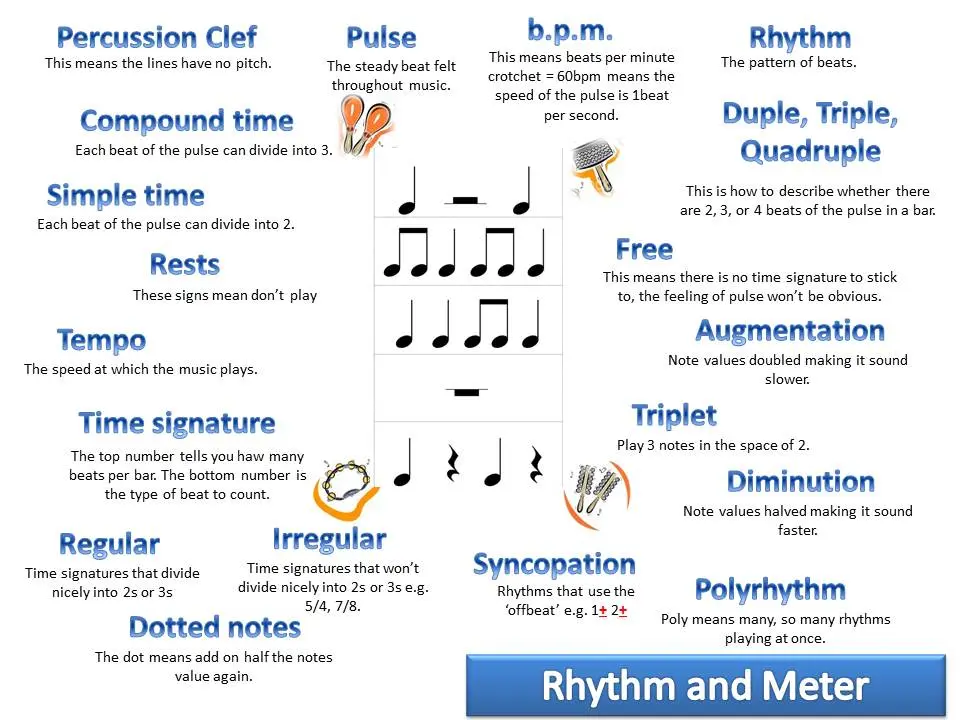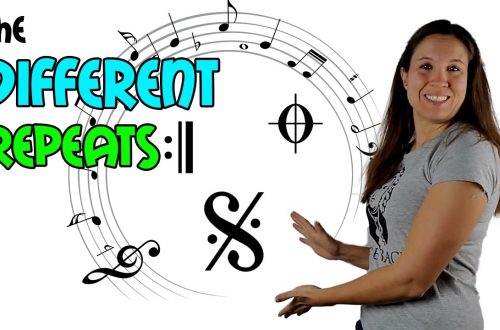
Rhythm and meter in music: what are they and why are they needed?
Contents
Music is an art whose language is sound. Sounds differ from each other not only in their height, but also in duration, that is, in time. Melodies are rarely found, which make up sounds that are strictly the same in length. Much more often we are faced with a combination of different notes: long and short. It is this combination that is called rhythm.
What is rhythm in music?
The definition of RHYTHM is very simple. Rhythm is the alternation of sounds and pauses of different duration. This explanation of this term can be found in many textbooks on music theory.
Please note that not only the duration of the sounds form the rhythm of the melody, but also pauses – moments of silence, since they also take time.
Why is rhythm the basis of music?
This question is often asked: “could music exist without rhythm”? The correct answer is: of course not, it could not. Why? Yes, because music exists only in time, just like a movie or a theatrical production. If you stop time, the music will stop, and the music will disappear.
You need to remember that music is a temporary art, and rhythm, that is, long and short notes, pauses, are, as it were, events that occur in this time.
How is musical time measured?
But time in music is not the same as in physics. It cannot be measured in exact, standard seconds. Time in music is relative, it is similar to the beating of a human heart, and units of musical time are even called by such a word – PULSE.
What is pulse? The pulse in music is equal beats. These blows can be fast, they can be slow, the main thing is that they be uniform. Listen, for example, to a steady pulse on the note LA.
Long and short sounds alternate in rhythm, but the basis of everything is the pulse. Of course, in musical works, the beats of the pulse are not beaten aloud so as not to spoil the music, but the musicians always feel and hear them inside themselves. The feeling of even pulsation is the main feeling that a musician must develop in himself if he wants to learn how to play rhythmically.
Strong and weak pulse beats
Pulse beats are always uniform, but not uniform. There are strong blows, and there are weak ones. This phenomenon can be compared with stress in words: there are stressed syllables and there are unstressed ones. And if stressed and unstressed syllables alternate in a certain order, then poetry is obtained. In versification, there are even rhythmic figures of their own – iambic and chorea feet, dactyl, amphibrach and anapaest, etc. But this is the topic of a separate article, and we will return again to the musical rhythm.
So, in the pulsation, strong and weak beats of the pulse alternate. Their alternation always has some order, regularity. For example, it can be like this: one blow is strong, followed by two weak ones. Or it happens differently: a strong blow, then a weak one, again a strong one, followed by a weak one again, etc.
By the way, the distance, that is, the time from one strong beat to the next strong beat in music is called BEAT. In musical notation, measures are separated from each other by vertical barlines. Thus, it turns out that each bar contains one strong beat and one or more weak beats.

What is a musical meter?
For convenience, alternating pulse beats are recalculated. A strong blow is always considered as “ONE”, that is, it becomes the first initial, and after that there are weak blows – the second, third (if any). Such the counting of shares in music is called METER.
Meter as a term has a connection with the word “measure”, that is, to count, to turn the properties of phenomena into numbers. Meters are different: simple and complex. Simple meters are two-part and three-part.
DOUBLE METER – contains two parts, that is, two beats of the pulse: first strong, then weak. The score will be like in a march: ONE-TWO, ONE-TWO, ONE-TWO, etc. Listen to an example with such a meter.
TRIPLOCKER METER – contains three beats of the pulse, one of them – the first – is strong, and the other two are weak (the second and third). The meter count is reminiscent of a waltz: ONE-TWO-THREE, ONE-TWO-THREE, etc. Listen to an example of such a meter for comparison.
Compound meters are obtained when two or more simple meters are glued together. Moreover, both the same (homogeneous) and different meters can be connected. That is, you can connect two two-part meters, but you can also mix a two-part meter with a three-part one.
Numeric expression of a meter
The numerical expression of a meter is MUSICAL TIME. The notion of time refers to musical measures – it is them that he measures. With the help of two numbers, the musical time signature tells us what meter should be in a measure (how many fractions of everything should be), and which of the durations the pulse beats (quarter, eighth or half).
The time signature is usually written at the beginning of the staff after the treble clef and key accidentals, if they are, of course, in the piece. Its record is two numbers that are placed one above the other like a mathematical fraction.

We will talk more about the musical size in the next issues. Let’s review the most important definitions of today’s lesson.

If you have any questions while reading the material, please ask them in the comments. It is very important for us that you understand everything that we wanted to convey to you.





